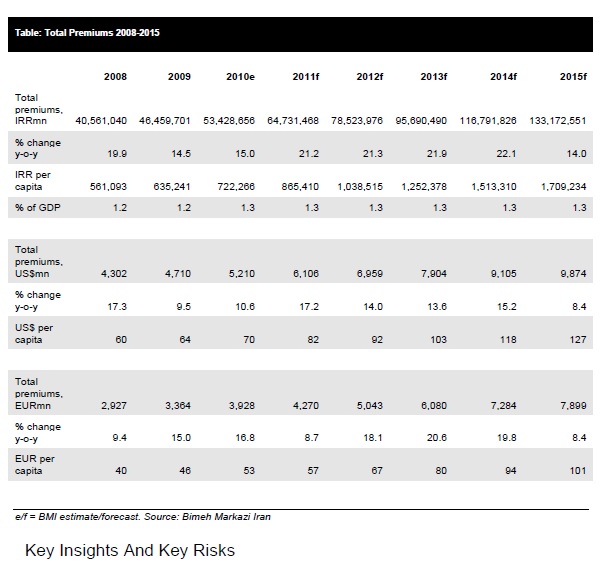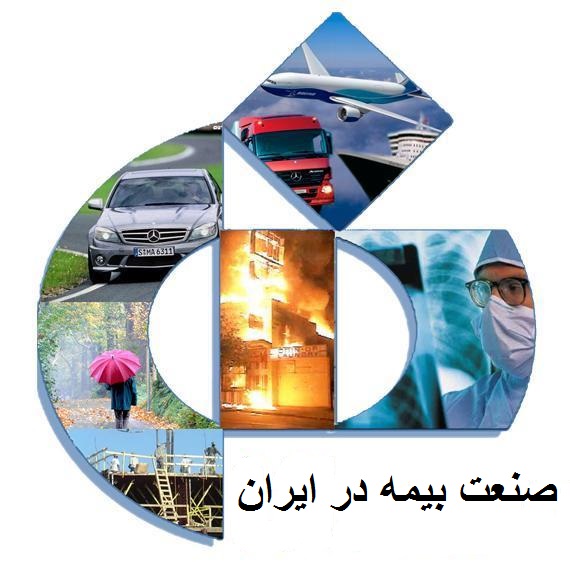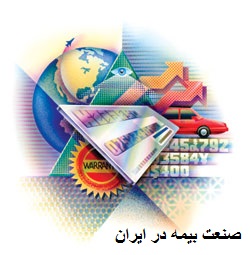صنعت بیمه در ایران- سه ماهه چهارم 2015
Executive Summary

Key Insights And Key Risks
Iran’s insurance sector is substantial and has shown that it can develop, if not thrive, despite the lack of access to global markets However, it is not growing in real terms. Unlike in most countries, ‘liberalisation’ and ‘privatisation’ are processes that are unhelpful for most insurance companies.

Iranian households have no incentive to use life insurance and there is no sign that this is going to alter any time soon. The sector has huge potential – but this is most unlikely to be realised unless there is wholesale political change.
Iran’s insurance sector has a number of strengths, including scale in terms of gross written premiums per annum. Bimeh Iran, the largest company that is a state-owned enterprise, is one of the largest underwriters in the Middle East and would rate as a reasonably large insurer in most countries. Non-life penetration has consistently remained slightly above 1% of GDP. Among other things, this suggests the regulatory regime is reasonably sound. Iran’s insurers have managed to survive in the face of various challenges – not least of which is the almost complete lack of access to the global reinsurance markets.
Unlike in other Middle Eastern countries, Iran’s insurance sector does not consist of a surprisingly large number of sub-scale non-life companies that are offshoots of local business interests that do not have a clear edge in the industry.
The sector is undergoing ‘privatisation’, via listings of companies on the Tehran Stock Exchange, and ‘liberalisation’, in that the decisions over products and pricing are moving from Bimeh Markazi Iran (the regulator and, to a certain extent, provider of reinsurance service) to the insurers themselves.
However, in contrast to privatisation in other countries, the deals in Iran are not necessarily reducing government control and are certainly not increasing formerly state-owned companies’ access to capital.
The limited data that is available suggests the main impact of ‘liberalisation’ is to transfer resources from shareholders of private sector companies (including the recently ‘privatised’ Bimeh Alborz, Bimeh Asia and Bimeh Dana) to the still state-controlled Bimeh Iran, employees and, to a certain extent, insurance customers.
High inflation in Iran distorts the insurance sector in two ways. It obscures the fact that in real terms insurance has hardly been growing. It also provides a major disincentive for the many Iranian households that have significant savings to use life insurance, which hardly exists in the country.

Parsian Insurance, the private sector operator that benefits from its Bancassurance partnership with the eponymous bank, has released figures that indicate that the industry grew by around 15% in Iranian year 1389 (the year to 20 March 2011, which we have shown as 2010). The Iranian insurance sector is barely growing in real terms. This is partly because some of the companies with whom Parsian is competing are pricing products at uncommercially low levels.

